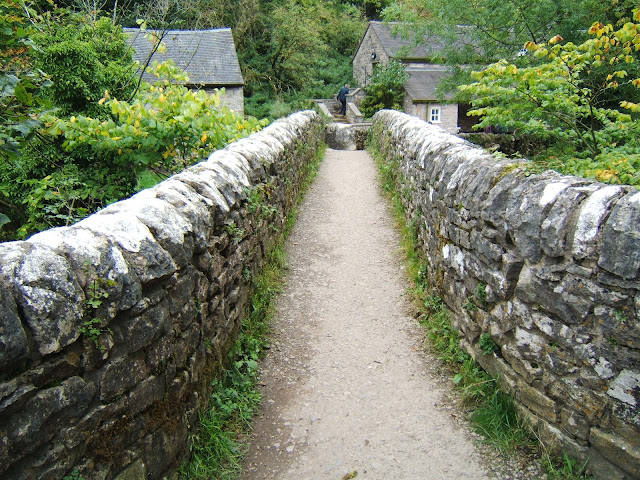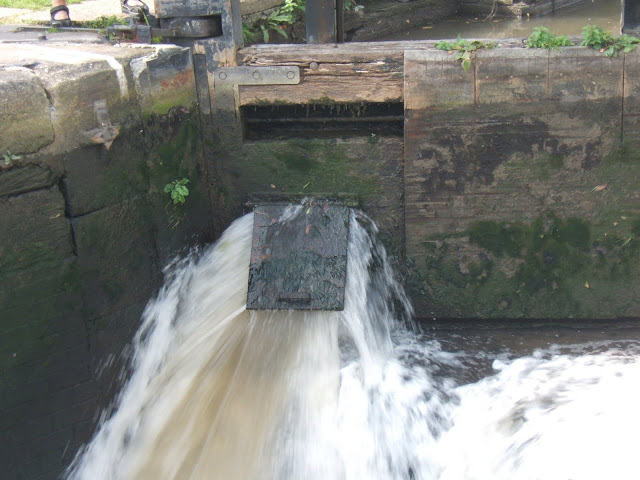This ancient packhorse bridge is a short stroll across a few fields (and a hairy slither down a steep bankside) from Alstonefield. It spans the River Dove at Milldale, a hamlet of stone cottages lying between Dovedale gorge to the south and Wolfscote dale to the north.
Once, Milldale was a busy industrial centre with a corn mill and ochre mill by the river, and Lode Mill, which prepared lead ore for smelting. Now it is visited mainly by walkers; lots and lots of walkers, who come to enjoy the natural beauty of the dales.
The bridge is generally known as Viator's Bridge; a viator being a traveller or wayfarer from the Latin viāre, to travel. It is thought to have gained this name when Izaak Walton, author of The Compleat Angler (1653) first saw the bridge and exclaimed "Why! A mouse can hardly go over it; 'tis not twelve fingers broad."
His reaction was prompted by the narrowness of the bridge, made particularly noticable by the lack of any kind of wall. In the days of the packhorse routes, bridges were built with low parapets in order for the paniers to cross without interference. The higher parapets were added to this bridge at a later date.
The addendum to the 1676 edition of The Compleat Angler introduced the reader to two characters, one of whom was based on Izaac Walton and called Viator. Hence the name by which the bridge came to be known.
I'm pleased to say that Viator Bridge is listed as an ancient monument.
I wonder what other students have chosen as their B project over at Jenny Matlock's..













































.jpg)






